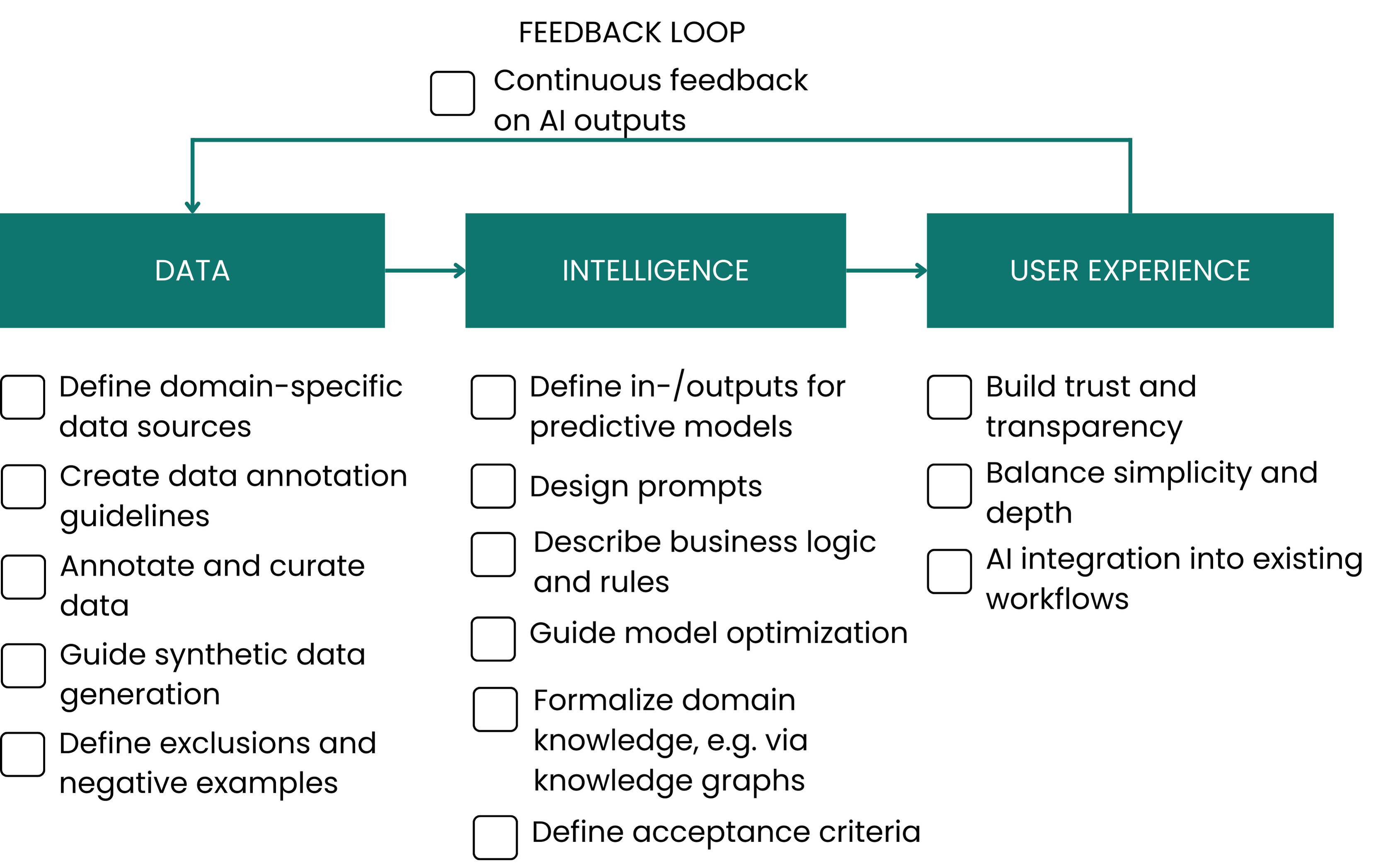Domain Expertise Injection
Domain expertise injection is a systematic approach to integrating expert knowledge into AI systems. It goes beyond training data to shape how problems are framed, how models behave, and how users interact with outputs. This model identifies where domain insights can be embedded across the AI lifecycle to improve relevance, trust, and adoption—especially in complex or regulated domains.

Principles
Expertise can be injected at any layer of the AI stack: data, intelligence, or user experience.
AI systems perform best when aligned with tacit human knowledge, not just observed patterns.
Feedback loops allow expert knowledge to evolve alongside the system.
Balance formalized assets (e.g. rules, templates) with ongoing expert interaction.
Adoption increases when users recognize their expertise in the system's behavior.
Implementation steps
1Map your system architecture
Lay out how your system handles data, intelligence, and UX—then identify weak spots where expert insight is missing or misrepresented.
2Embed expertise at each layer
Use the checklist to choose practical injection methods across data, model logic, and user-facing layers.
3Enable expert feedback loops
Establish lightweight channels for experts to flag issues, suggest improvements, and correct model behavior over time.
4Validate outputs collaboratively
Involve domain experts in shaping acceptance criteria, reviewing edge cases, and stress-testing decisions.
Anti-patterns
Data-Only AI: Relying solely on data patterns without contextual human input.
Expert Tokenization: Consulting experts once, then freezing their input into static rules.
Shallow UX: Failing to show where expert logic influences the AI, or giving users no control.
One-Shot Validation: Involving experts only at the end to 'approve' the result.
Resources
Related models
- AI System BlueprintUse to align your system's data, intelligence, UX, and governance layers.
- Trust ScalePair domain injection with calibrated trust—especially in high-stakes or ambiguous contexts.
- Partial AI ExplanationsHelp users interpret expert-informed outputs by explaining where human logic was applied.